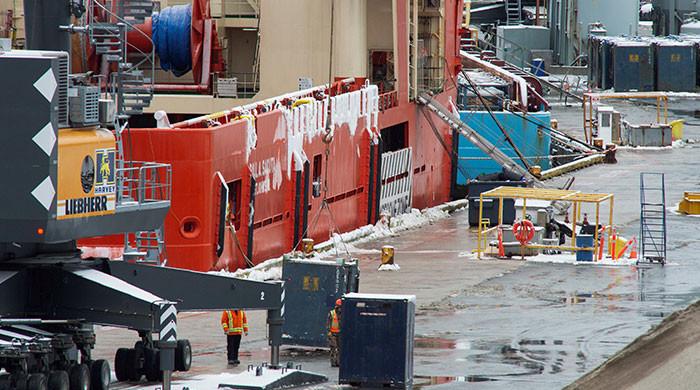What do Trump’s tariffs mean for Canada, Mexico?

WASHINGTON: United States President Donald Trump’s move to slap 25% tariffs on Canada and Mexico is set to affect supply chains for a wide array of products from industries preparing for jacked-up costs.
Trump invoked emergency economic powers in imposing tariffs on Canada, Mexico and China, arguing they had failed to stem the flow of illegal immigrants and drugs into the US.
Chinese goods faced an added 10% tariff under the latest announcement.
Meanwhile, Washington’s imports from both its neighbours covered nearly $900 billion in goods as of 2023 as the supply lines between the three countries who share a trade agreement — are deeply integrated — however, the fresh tariffs would pose complications for businesses with a footprint across one or more countries.
Analysts expect Trump’s 25% across-the-board tariffs on Canada and Mexico would hit the automobile and electronics sectors hard.
While Canadian energy exports have a lower 10% rate, this still marks an uptick as the US previously did not impose tariffs on Canadian oil imports.
Mexico and Canada also account for significant US agriculture imports, meaning the duties could add to the prices of popular foods like avocados and tomatoes.
Also, analysts have said that US tariffs on Canadian and Mexican imports could be incompatible with the US-Mexico-Canada Agreement (USMCA), a trade deal Trump inked during his first presidential term.
Some further anticipated that Trump’s posturing could be a way for Washington to gain an upper hand ahead of a 2026 deadline to review the USMCA.
Canada
Nearly 80% of Canadian goods exports go to the US, amounting to some $410 billion in value, according to Statistics Canada.
The levies will hit Canadian vehicle and energy industries hard, given that they represent over 40% of Canada’s exports to the US.
The energy exports involve mainly crude oil and bitumen, alongside natural gas.
The auto sector in Ontario — the nation’s most populous province — faces particular challenges.
This is because “various parts cross the border multiple times before ending up in a finished product,” said Robert Kavcic, at the Bank of Montreal, in a research note.
The US imports construction materials from Canada, too, meaning tariffs could drive up housing costs.
More than 70% of imports of two key materials home builders need — softwood lumber and gypsum — come from Canada and Mexico, said National Association of Home Builders chairman Carl Harris.
“Tariffs on lumber and other building materials increase the cost of construction and discourage new development,” he said.
Mexico
Mexico’s exports to the US represented 84% of the goods it sold to the world last year, according to its National Institute of Statistics.
This amounts to over $510 billion.
The auto industry spanning vehicles and parts, alongside the electronics and machines sector, will likely see the greatest impact.
They send around half of all their production to the United States, analysts from Capital Economics said.
The latest 25% tariffs would also affect sectors like food.
Mexico supplied 63% of US vegetable imports and nearly half of US fruit and nut imports in 2023, according to the US Department of Agriculture.
More than 80% of US avocados come from Mexico — meaning higher import costs could push up prices of items like guacamole.
Potential implications
Economists warned that heavy US tariffs — and retaliatory measures — could tip Canada and Mexico’s economies into recession, while the US would face risks of a shallow downturn too.
“The tariffs send a clear message, reinforcing Trump’s America First stance while using trade as a geopolitical tool,” EY chief economist Gregory Daco told AFP.
Markets will view this as heightened political uncertainty while investors brace for inflationary pressures and supply chain disruptions, he said.
Mexican President Claudia Sheinbaum has already announced that her country would impose retaliatory tariffs.
“Mexico and Canada could challenge the move under USMCA, while China may counter with targeted restrictions,” Daco said.
A bigger concern, he added, was that the situation could escalate into a prolonged and broader conflict.
Source link




